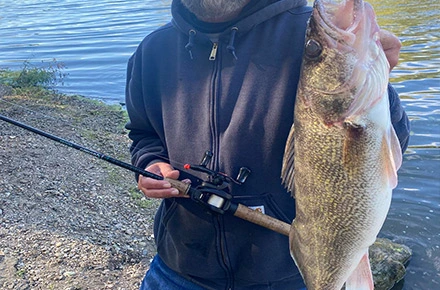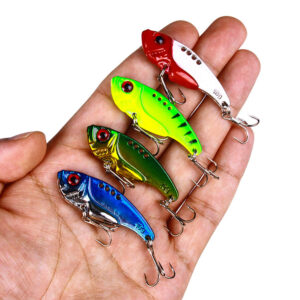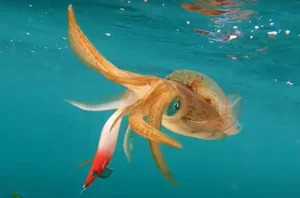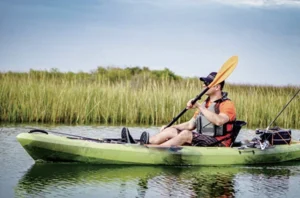Are you ready to tackle the exciting world of bass fishing? Whether you’re a seasoned angler or a beginner, having the right gear is key. It’s crucial for a successful fishing trip. In this guide, we will explore the key gear you need. It will help you catch that trophy bass. From fishing rods and reels to lures and tackle boxes, we’ll cover it all. So grab your fishing hat and let’s dive in!
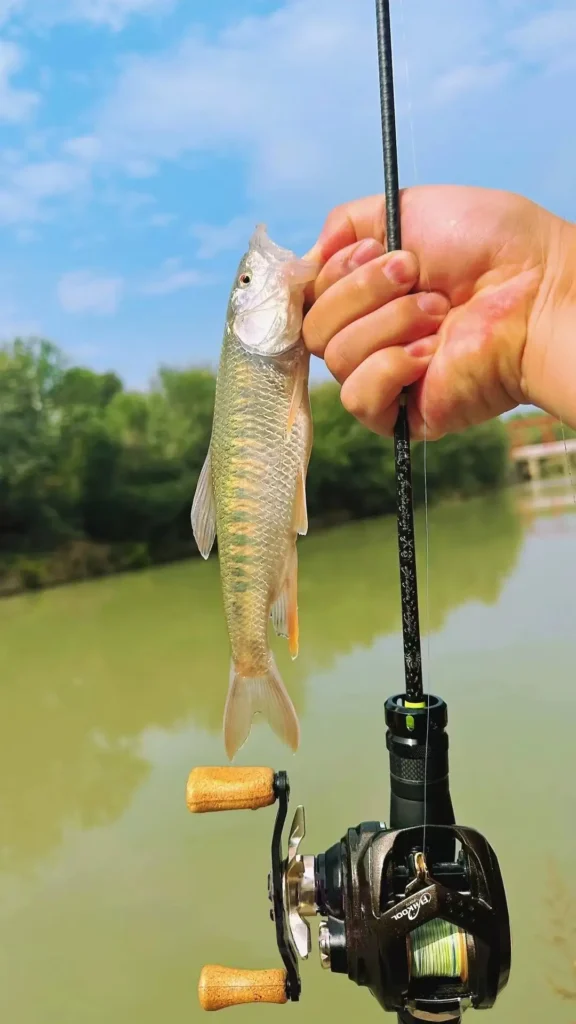
Section 1: Fishing Rods and Reels
1.1 Choosing the Right Fishing Rod
The fishing rod is the foundation of your fishing gear. When it comes to bass fishing, you’ll want a rod that is both sensitive and strong. Look for a medium to medium-heavy rod with a fast action. This will allow you to feel even the slightest nibble and give you the power to handle big bass.
What are the different types of fishing rods suitable for bass fishing?
When it comes to bass fishing, choosing the right fishing rod is crucial for success. Here are the different types of fishing rods commonly used for bass fishing:
Casting Rods:
Description: Casting rods, also known as baitcasting rods, are designed to work with baitcasting reels.
Features: They offer more power and accuracy, making them ideal for targeting larger bass and casting heavier lures.
Best for: Casting rods are for techniques like flipping and pitching. They are also for targeting specific spots precisely.
Spinning Rods:
Description: Spinning rods are paired with spinning reels and are popular among bass anglers for their versatility.
Features: They are easier to use for beginners, offer better casting distance, and are great for finesse techniques.
Best For: Spinning rods are suitable for techniques like drop shooting, shaky head fishing, and finesse presentations.
Length and Action:
Length: Choose a rod length based on the type of bass fishing you plan to do. Longer rods provide better casting distance, while shorter rods offer more accuracy.
Action: The action of the rod determines how much the rod bends under pressure. Fast-action rods bend mostly at the tip. They provide better sensitivity. Moderate action rods bend more towards the middle. They offer a balance of power and flexibility.
Picking the right fishing rod for bass fishing depends on your style. It also depends on your methods and preferences. Consider the type of lures you use. Also, think about the fishing environment and the size of the bass you are targeting. Consider these factors when choosing a rod.
For more specific recommendations on bass fishing rods, ask experienced anglers. Also, visit local tackle shops or look at online resources dedicated to bass fishing gear.
If you need further help or have more questions about bass fishing rods, Contact Us!
1.2 Selecting the Perfect Fishing Reel
Pairing your fishing rod with the right reel is essential. There are several types of reels to choose from. They include spinning reels, baitcasting reels, and spin-casting reels. Each reel has its pros and cons. Consider your skill and style when choosing.
How can gear ratio impact the effectiveness of fishing reels in bass fishing?
The gear ratio of a fishing reel determines the speed at which the line is retrieved. In bass fishing, the gear ratio can impact the reel. It does this by affecting lure presentation. It changes retrieval speed and the ability to handle fishing techniques.
1. Lure Presentation:
Reels have high gear ratios (e.g., 7.1:1 and above). They retrieve the line quickly. This makes them good for techniques like flipping, pitching, and topwater fishing. Those techniques need fast retrieval.
Low Gear Ratio (e.g., 5.4:1 to 6.4:1): Reels with lower gear ratios provide more torque. They are ideal for techniques like deep cranking and slow-rolling spinnerbaits. These techniques need a slow retrieval for better lure control.
2. Retrieval Speed:
A high gear ratio is good for quickly reeling in fish. It also helps cover water and react to strikes.
Low gear ratios are good for techniques that need a slow presentation. They need precise lure control and cause less fatigue.
3. Handling Different Techniques:
Versatility is key. Reels with moderate gear ratios (e.g., 6.4:1) balance speed and power. They work for a wide range of bass fishing techniques.
Specialized Techniques: Use specific techniques like deep cranking, jigging, or slow-rolling. They may enjoy reels with lower gear ratios. These reels help maintain control and maximize effectiveness.
The right gear ratio for your fishing reel in bass fishing depends on the techniques you use. It also depends on the depth at which you are fishing and the speed you need to retrieve your lure. Understanding how gear ratio affects reel performance can help you improve your fishing. It can also increase your chances of success.
You can find gear ratio details and their impact on fishing reels in fishing gear guides. You can also find them in manufacturer specs and advice from expert anglers.
If you have more questions or need more on gear ratios in bass fishing, con!
1.3 Understanding Fishing Line Options
The 낚싯줄 is the connection between you and the fish. It’s important to choose the right line for bass fishing. Monofilament, fluorocarbon, and braided lines are the most common options. Each has its strengths and weaknesses. Consider factors like line visibility, strength, and sensitivity when making your choice.
How does the quality of fishing lines impact fishing success?
Quality fishing lines can significantly impact fishing success in various ways.
Durability and Strength:
Good fishing lines are durable. They are less likely to break when fighting a fish. This is especially true for big species like bass. This toughness ensures the line can handle the stress and strain of fishing. It boosts the chances of landing a fish.
Sensitivity:
Better fishing lines are more sensitive. They let anglers feel even the slightest bites or movements underwater. This sensitivity is crucial for detecting bites from subtle fish like bass. It leads to quicker hook sets and more successful catches.
Abrasion Resistance:
Good fishing lines are more resistant to abrasion from rocks, debris, or the fish’s mouth. This resistance reduces the chances of the line getting damaged during fishing. It ensures that the line remains strong and functional throughout the fishing session.
Visibility:
The visibility of the fishing line can also impact fishing success. Good lines are often in many colors. They let anglers pick lines that fish in different waters will not see. This can increase the chances of attracting fish without spooking them.
Casting Distance and Accuracy:
Good fishing lines have low memory and cast well. This lets you cast longer and more accurately. This feature is vital for reaching faraway or specific fishing spots. Bass might be hiding there, increasing the chances of a successful catch.
Knot Strength:
The quality of the fishing line also affects the strength of knots tied with it. Strong lines are less likely to break at the knot. This keeps the connection between the line and the hook or lure secure while fishing.
In conclusion, line quality is crucial for fishing success. Good lines improve durability, sensitivity, abrasion resistance, visibility, casting, and knot strength. They make fishing better and increase the chances of landing more fish.
Section 2: Essential Bass Fishing Lures
2.1 Topwater Lures for Aggressive Strikes
Topwater lures are a favorite among bass anglers. They imitate wounded baitfish or frogs. These float on the water’s surface, enticing bass to strike. Popular topwater lures include buzz baits, poppers, and frogs. Try different sizes and colors. Find the lure that triggers the most strikes.
2.2 Dive Deep with Crankbaits
Crankbaits are versatile lures that can be used in various fishing conditions. They mimic injured baitfish and have a diving lip that allows them to reach different depths. Look for crankbaits with realistic finishes. They should have rattles to attract bass from a distance.
2.3 Jigs: The Versatile Bass Catcher
Jigs are a staple in any bass angler’s tackle box. They consist of a lead head, skirt, and trailer. Jigs are very versatile. You can fish them in many ways, like flipping, pitching, and swimming. Try different jig colors and trailer combos. They will help you find the right mix for your fishing spot.
2.4 Soft Plastic Worms for Finesse Fishing
Soft plastic worms are a classic lure for bass fishing. They can be rigged in different ways, such as Texas rig, Carolina rig, or wacky rig. These lures are known for their lifelike action. They are particularly effective in clear water or when bass are in a finicky mood.
What factors influence the presentation of a lure in bass fishing?
Type of Lure: The type of lure used affects how it moves and looks in the water. Lures include crankbaits, jigs, soft plastics, and topwater lures. This influences how bass responds to it.
Color: The color of the lure can attract or deter bass based on water clarity, light conditions, and the natural prey in the area. Choosing the right color can make the lure more appealing to bass.
Size and Shape: The size and shape of the lure determine how it imitates natural prey and how easily bass can strike it. Matching the size and shape to the local forage can improve presentation.
Action: The action of the lure, such as wobbling, diving, popping, or fluttering, influences how it moves in the water and how it attracts bass. Varying the action can entice more strikes.
Retrieve Speed: The speed at which the lure is retrieved affects its presentation. Slow retrieves are suitable for some lures, while fast retrieves work better for others. Experimenting with retrieve speed can help find the most effective presentation.
Adjust the depth at which the lure runs or floats. This can target bass at different water levels, ensuring the lure is in the strike zone for feeding bass.
Water Conditions: Factors like water temperature, clarity, current, and weather conditions impact how bass perceive and respond to lures. Adapting the presentation to these conditions can improve success.
Season: Bass behavior changes with the seasons, affecting their feeding preferences and activity levels. Changing how you present the lure based on the season can increase the chances of attracting bass.
Structure and Cover: Underwater structure, vegetation, rocks, or other cover affect how lures should be presented. They help avoid snags and mimic natural prey.
Sound and Vibration: Some lures make sounds or vibrations. They attract bass by mimicking distressed prey or sparking curiosity. Using lures with sound elements can enhance the presentation.
In summary, the presentation of a lure in bass fishing is influenced by factors. These include lure type, color, size, and action. Also, retrieve speed, depth, water, and season. Plus, structure, sound, and vibration. Understanding and adjusting these factors can improve lure presentation. They increase the chances of enticing bass to strike.
Section 3: Tackle and Accessories
3.1 Tackle Boxes and Storage Solutions
Keeping your fishing gear organized is essential for a successful fishing trip. Invest in a good tackle box or bag. It can hold your lures, hooks, weights, and other gear. Look for a box with adjustable compartments. It should have a sturdy construction to protect your gear.
What factors influence the presentation of a lure in bass fishing?
When choosing a tackle box for fishing gear, consider the following essential features:
Size and Capacity: Ensure it can accommodate your fishing gear.
내구성: Look for sturdy materials that can withstand outdoor conditions.
Organization: Opt for a box with compartments and trays for easy organization.
Water Resistance: Choose a water-resistant box to protect your gear.
Portability: Consider the weight and ease of carrying the tackle box.
Security: Look for boxes with secure latches to prevent accidental spills.
When choosing a tackle box for your fishing gear, consider key features. They ensure it meets your needs well.
1. Size and Capacity:
The size of the tackle box should match the amount of fishing gear you have. Consider the types of fishing you do and the variety of lures, hooks, and accessories you need to carry.
2. Durability:
Choose a tackle box made from tough materials. These include hard plastic or metals that resist corrosion. This ensures the box can handle rough handling and outdoor conditions. It won’t break or wear down easily.
3. Organization:
Look for a tackle box with multiple compartments, trays, and dividers. This helps you keep your gear organized and easy to reach. It saves time and frustration while fishing.
4. Water Resistance:
Fishing involves exposure to water, so opt for a tackle box that is water-resistant or waterproof. This feature protects your gear from moisture and ensures it stays in good condition.
5. Portability:
Consider the weight and design of the tackle box for ease of transportation. Look for features like comfy handles or shoulder straps. They make carrying easier, a big help if you need to walk far to your fishing spot.
6. Security:
Choose a tackle box with secure latches or closures to prevent accidental spills and keep your gear safe during transport. This feature is essential for protecting your expensive lures and equipment.
Consider these key features. They will help you pick a tackle box that fits your fishing style. It will protect your gear and improve your fishing experience.
3.2 Hooks, Weights, and Swivels
Your tackle box needs a variety of hooks, weights, and swivels. They are crucial for adapting to different fishing conditions. Hooks come in many sizes and styles. These include offset, worm, and treble hooks. Different weights and swivels allow you to adjust your presentation. This can improve your chances of catching bass.
What are the different types of hooks used in fishing?
There are various types of hooks used in fishing, including J-hooks, circle hooks, treble hooks, and bait hooks.
. J-Hooks: These are the most common type of hooks used in fishing. They have a “J” shape and are versatile for different types of fishing.
. Circle Hooks: They hook fish in the corner of the mouth. This reduces gut hooking and improves catch-and-release.
. Treble Hooks: Treble hooks have three points and are often used in lures for catching predatory fish like bass.
. Bait Hooks: Bait hooks are single hooks used with natural or artificial bait for a wide range of fishing applications.
Each type of hook has its advantages and is used based on the fishing technique, target species, and fishing conditions.
How do weights influence the presentation of bait or lure in fishing?
Weights play a crucial role in fishing as they influence the presentation of bait or lure in the water column by determining the depth at which the bait or lure will sink and how it moves in the water. The placement and type of weight used can significantly impact the effectiveness of the fishing technique.
Factors Influenced by Weights in Fishing Presentation:
Depth Control: The weight attached to the fishing line determines how deep the bait or lure will sink in the water. Heavier weights sink faster, allowing anglers to target specific depths where fish are located.
Bait Movement: The weight affects how the bait or lure moves in the water. Lighter weights can create a more natural and subtle presentation, ideal for finesse fishing techniques. Heavier weights can provide a faster drop or a more aggressive movement, suitable for certain types of fishing.
Casting Distance: Adding weight to the fishing line can improve casting distance, especially in windy conditions or when targeting distant areas. The weight helps to load the rod and allows for longer and more accurate casts.
Bottom Contact: Using weights can help anglers maintain contact with the bottom, which is essential for techniques like bottom fishing or jigging. Feeling the bottom structure can help identify potential fish-holding areas.
Types of Weights Used in Fishing:
Split Shot: Small, removable weights that can be easily added or removed from the line to adjust the presentation.
Bullet Weights: Shaped like a bullet, these weights are designed for streamlined casting and are commonly used in techniques like Texas rigging.
Drop Shot Weights: Specifically designed for drop shot fishing, these weights are attached below the hook to keep the bait at a specific depth.
Bank Sinkers: Larger, cylindrical weights used for bottom fishing to keep the bait stationary on the seabed.
Importance of Proper Weight Selection:
Choosing the right weight for the fishing technique and conditions is crucial. It’s key for a successful fishing presentation. You must experiment with different weights. This will help you find the best balance. It’s a balance between depth control, bait movement, and casting distance.
Anglers can adapt by understanding how weights affect bait or lure presentation in fishing. They can use this knowledge to target certain fish. This will improve their fishing success.
When should swivels be used in fishing equipment?
Use swivels in fishing equipment. They prevent line twists and tangling. This is especially true when using certain fishing techniques or rigs.
Reasons for Using Swivels in Fishing Equipment:
Preventing Line Twist: Swivels are essential in setups where the bait or lure spins or rotates, causing the fishing line to twist. The swivel allows the bait to move freely without transferring the rotation to the mainline, reducing the chances of line twist.
Tangling Prevention: Swivels help prevent tangles in fishing lines, especially when using multiple hooks, lures, or rigs. They allow the components to move independently, reducing the risk of entanglement.
Enhancing Bait Presentation: In certain fishing techniques like trolling or using live bait rigs, swivels can improve bait presentation by allowing the bait to move naturally in the water without affecting the mainline.
Strength and Durability: Swivels are designed to handle the stress of fish fighting and sudden movements. Using swivels can increase the overall strength and durability of the fishing setup.
다재: Swivels come in various sizes, shapes, and designs to suit different fishing applications. They offer versatility in connecting different components of the fishing rig efficiently.
When to Use Swivels:
트롤링: When trolling with multiple lines or lures behind a moving boat, swivels are essential to prevent line twists and maintain smooth lure action.
Bottom Fishing: In bottom fishing where the bait may spin or move with the current, using a swivel can prevent line twist and ensure the bait presentation remains natural.
Using Live Bait: When using live bait that tends to swim or move in the water, incorporating a swivel can allow the bait to move freely without affecting the mainline.
Making Rigs: When creating complex rigs with multiple hooks, sinkers, or leaders, swivels are used to connect the components and prevent tangling.
You can improve your fishing experience by strategically adding swivels to your fishing setup. They also make your fishing techniques more efficient.
Section 4: Fishing Accessories
4.1 Fishing Pliers and Tools
Fishing pliers are a must-have accessory for any angler. They are essential for removing hooks, cutting fishing lines, and crimping split shots. Look for pliers made from corrosion-resistant materials. They, like stainless steel, can withstand the harsh fishing environment.
4.2 Fishing Nets and Landing Gear
A fishing net is an indispensable tool for landing bass. It allows you to safely bring the fish into the boat or onto the shore without injuring it or losing your catch. Look for a net with a rubberized or knotless mesh that is gentle on the fish’s scales and fins.
4.3 Polarized Sunglasses for Better Visibility
Polarized sunglasses are more than just a fashion statement. They cut glare and boost visibility. This lets you see below the water. This is especially important when targeting bass in shallow water or around structures.
Section 5: Additional Tips and Tricks
5.1 Choosing the Right Fishing Spot
Finding the right fishing spot is crucial for a successful bass fishing trip. Look for areas with cover, such as fallen trees, weed beds, and rocky structures. Bass love to hide in these areas, waiting for an easy meal.
5.2 Fishing Techniques and Strategies
Learning various fishing techniques and strategies can greatly improve your chances. You will catch more bass. Experiment with techniques. These include flipping, pitching, and drop-shotting. Find the one that works best for you. Pay attention to weather, water temperature, and bass behavior. Use this information to adapt your approach.
5.3 Staying Safe on the Water
Safety should always be a top priority when fishing. Wear a properly fitted life jacket, especially when fishing from a boat. Familiarize yourself with local fishing regulations. Practice catch and release to preserve fish populations for future generations.
Why is it important to regularly maintain fishing gear for optimal performance?
Regular maintenance of fishing gear is vital for top performance. It ensures the gear’s longevity, reliability, and effectiveness. This leads to better fishing and more success.
Longevity: Proper maintenance helps prevent premature wear and tear, extending the lifespan of fishing gear such as rods, reels, lines, and lures.
Reliability: Regular inspections and upkeep reduce the risk of equipment failure during fishing trips, enhancing the reliability of gear when targeting fish.
Performance: Cleaning, lubricating, and tuning fishing gear improves performance by maintaining smooth operation, casting accuracy, and fish-fighting capabilities.
Cost-Effectiveness: Routine maintenance can prevent the need for costly repairs or replacements due to neglect or damage, saving money in the long run.
Safety: Well-maintained gear reduces the likelihood of accidents or malfunctions that could compromise the safety of the angler or others on the water.
Fishing Success: Well-kept gear boosts an angler’s confidence. This helps them focus on fishing techniques and strategies. It ultimately improves their success in catching fish.
Regular maintenance practices include cleaning and lubricating. They also include inspecting for damage and replacing worn parts. After each use, gear should be stored properly. Anglers should follow the maker’s guidelines. They should also use best practices. This will keep their fishing gear in top condition for successful and fun fishing.
결론
You have the right gear and knowledge. Now, you’re ready to start your bass fishing adventure. Remember, bass fishing is not just about catching fish. It’s about enjoying nature and the thrill of the chase. So grab your gear and hit the water. Create unforgettable memories on your bass fishing journey. Happy fishing!
Disclaimer: This guide provides a basic overview of essential gear for bass fishing. For more detailed information on specific gear recommendations and techniques, consider consulting fishing magazines, online resources, or local fishing experts. Always follow local fishing regulations and practice responsible angling.
If you need more specific information or recommendations on bass fishing gear, Contact Us!

